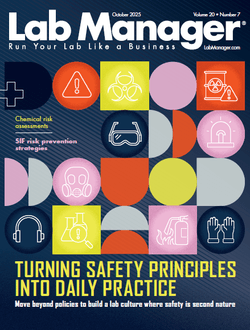The purpose of business writing is to convey information to someone else or to request information from them. To be effective writing for business, you must be complete, concise, and accurate. Your text should be written in such a way that the reader will be able to easily understand what you are telling or asking them.
A lot of writing for business is sloppy, poorly written, disorganized, littered with jargon, and incomplete. Often it is either too long or too short. All these attributes contribute to ineffective business writing.
Whether you are writing a sales proposal, an email to your department, or an instruction manual for a software package, there are certain steps you need to follow to create effective business writing. You need to:
1. organize your material
2. consider your audience
3. write
4. proofread
5. edit your text.
The emphasis on each step may vary, depending on what you are writing, but the steps will be the same.
Organize
First, organize your material. When writing an email announcing a staff meeting, this may be as simple as collecting your thoughts. On the other hand, you may need to write out a multi-level outline of the material when writing up the results of a pharmaceutical trial. Without an appropriate level of organization, you can't be sure you will include everything or that you will give prominence to the most important topics. Omissions or incorrect focus can make your business writing less clear.
Audience
Before you start to write, think about your intended audience. For example, a presentation about your company's new 401(k) program may have the same outline when given to your CFO or to all employees, but the level of detail in various areas will differ. A quick email to your team, reminding them of the company's security procedures, won't have the same tone as your department's section of the company's annual report.
Also remember that you will be more effective writing to your audience if you focus on what you want them to hear rather than on what you are going to say.
Start Writing
Good writers have different styles of writing. Some prefer to write everything out and then go back and edit. Others prefer to edit as they go along. Sometimes their style varies depending on the piece they are writing.
As you write, or when you edit, be aware of length. Use enough words to make your meaning clear, but don't use unnecessary words just to make it flowery. Business writing needs to be clear and concise, not verbose and flowery. No one in business has time to read any more than necessary.
Conversely, don't make the piece too short. Write enough that your meaning is clear and won't be misunderstood. A part in a warehouse was labeled "used but good". It was unclear whether the author was trying to say the part had been really heavily used, or that the part was not new, but was still functional. Another couple of words would have made his writing more effective. Don't try to shorten a piece by using jargon or abbreviations. These often mean different things to different readers.
Regardless of the style you use when writing, you need to proofread and edit what you have written.
Edit and Proofread
After you write anything, you need to proofread it. You may then need to edit it. Proofreading is re-reading what you wrote to make sure all the words in your head made it correctly onto the paper or the screen. Since our brains work faster than our fingers, you may omit words, leave off an ending, or use the wrong homonym (there instead of their, for example). Proofreading catches these errors so you can fix them.
Obviously, proofreading a one-line email is pretty easy. Just glancing over it as you type may be enough. However, if you are writing an instruction manual, your proofreading will be more complicated and take longer.
After you have proofread your material, you need to edit it. Sometimes these can be done together, but it is more effective when they are done sequentially.
You edit to fix or change what you wrote in order to make the material better. When writing for business, this means fixing the errors and making the text clear and concise.
Manage This Issue
You are writing for business, not writing the "great American novel". Your writing should be as descriptive as necessary, but it does not need to paint vivid word pictures using lots of big words and figures of speech. If you mean "glass houses", don't write "vitreous domiciles".
Remember the rules for effective business writing to:
1. organize your material
2. consider your audience
3. write
4. proofread
5. and edit your text.
The purpose of business writing is to convey information to someone else or to request information from them. To be effective writing for business, you must be complete, concise, and accurate. Your text should be written in such a way that the reader will be able to easily understand what you are telling or asking them.
A lot of writing for business is sloppy, poorly written, disorganized, littered with jargon, and incomplete. Often it is either too long or too short. All these attributes contribute to ineffective business writing.
Whether you are writing a sales proposal, an email to your department, or an instruction manual for a software package, there are certain steps you need to follow to create effective business writing. You need to:
1. organize your material
2. consider your audience
3. write
4. proofread
5. edit your text.
The emphasis on each step may vary, depending on what you are writing, but the steps will be the same.
Organize
To continue reading this article, sign up for FREE to

Membership is FREE and provides you with instant access to eNewsletters, digital publications, article archives, and more.









